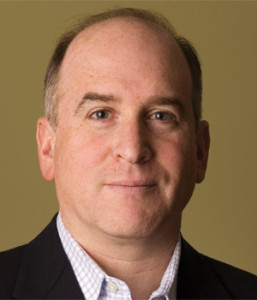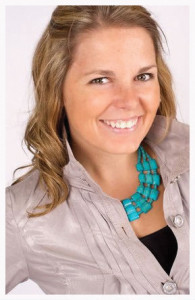Alternative Lenders Flip the Script

Traditional loans are back from the dead
Alternative business lenders are beginning to offer a product that doesn’t seem quite so alternative – term loans.
While banks are still the primary place to find loans with fixed repayment periods and set monthly payments, more and more non-bank players are venturing into the territory that was once the sole province of FDIC-insured institutions.
But, unlike bank loans, many in the alternative lending arena say their term loans are actually superior to many offered by banks because of their quick application process, which is simplified and accelerated compared with what banks can offer.
And with banks approving so few loans, and then only to businesses with pristine credit scores, many industry observers say that term loans offered through the non-traditional lending market may just be set to take off in new ways.
Industry advocates say business owners previously declined by banks after lengthy waiting periods can learn in five minutes if they’re approved for a loan. Many finance executives say process improvements were the key drivers of the increasing popularity of term loan, peer to peer, and crowd funding products in the small to midsized business sector.
The evolution of alternative lending
Gary Chodes is founder and CEO of Raiseworks, an online direct lending platform headquartered in New York City that links small businesses to institutional lenders, helping private companies achieve success while delivering stable, attractive returns to investors.
“Alternative finance is a new generation of financial service providers not affiliated with banks that are willing to use a variety of inputs – both traditional and non-traditional – to evaluate the creditworthiness of a business,” Chodes said.
 The industry’s focus on the underserved small to midsized business sector has fueled the growth of a new generation of financial service providers in the wake of the credit crisis, Chodes said.
The industry’s focus on the underserved small to midsized business sector has fueled the growth of a new generation of financial service providers in the wake of the credit crisis, Chodes said.
The subsequent diversification of product offerings in response to customer requirements continues to evolve, with term loans becoming the fastest-growing part of the alternative financial services landscape.
“Financial products being offered by alternative lenders come in a variety of structures,” Chodes said. “Merchant cash advance is simply the more established choice for small retail and restaurant businesses that have short-term borrowing needs.”
Chodes said that merchant cash advance continues to grow, but in the overall scheme is becoming a smaller and smaller part of the alternative lending pie.
“Term lenders, on the other hand, are not focused on daily collections or credit card receipts; their focus is typically a two to four year term with monthly or bi-monthly predictable payout schedules,” Chodes said.
LendingClub, a peer-to-peer lender based in San Francisco, links creditworthy consumer borrowers to approved investors online, bypassing traditional bank branch infrastructure. Tom Green, LendingClub’s vice president of new business initiatives, has long admired the contributions of entrepreneurs and small business owners to the U.S. and global economies.
“Small and midsized businesses have delivered 66 percent net new job creation since the 1970s, a contribution that’s currently at risk due to lack of capital,” Green said. “This market segment is highly underserved. Small business lending is a $200 billion dollar industry and we think it could be double that size. Many small to midsized business owners are fearful of merchant cash advances and the adverse impact these products may have on their businesses due to the high cost – APRs can easily exceed 100 percent.”
A transformative moment
Nik Milanovic manages marketing and partnerships at Funding Circle, a San Francisco-based online loan marketplace that connects small businesses with accredited investors who fund up to $500,000. Milanovic cited his background in microfinance as a reason for his fascination with Funding Circle’s “innovative model of non-bank finance that would transform the commercial credit market.”
He said that the rising tide of alternative lending is an “exciting space” for consumers and business owners.
“We’re all aware that bank lending has dried up for small business owners,” Milanovic said, “so we are providing a valuable service and see this as a core product line – rates are low, and may even get lower in the future, with three to five year terms. These services are being provided with the added benefit of excellent customer service.”
Technology is changing the rules of engagement in many industries and alternative lending is no exception.
“In this transformative moment in our industry, the ability to use technology to expedite underwriting decisions is transforming business lending and making it possible to quickly and efficiently provide working capital to business owners,” Chodes remarked.
A sharing economy
Chodes cited broader acceptance of technology in the private sector, coupled with continuing demand for working capital as key drivers of loan offerings by new, non-traditional lenders.
“Mass adoption of online communications means that business owners have a greater comfort level interacting with lenders electronically,” Chodes continued. “This wasn’t always the case. Allowing payments and bank account history to be shared electronically is a relatively new concept. We’ve seen a dramatic uptick in online behavior by business owners over the last few years.”
Chodes said the printed statement from the bank has become a relic.
“These technology trends coupled with an improving economy make it an ideal environment for alternative lenders to thrive,” Chodes said. “Tremendous amounts of capital are in demand by small businesses, in amounts we’ve never seen before. Conversely, banks in the post-credit crisis are uninterested or ill-equipped to meet this demand from small business. Consequently, participation by banks in the small business lending sector has plummeted over the last five years.”
Milanovic shared this view, expanding on the net benefits of automation. “More people are turning to alternative lenders,” Milanovic explained, “for a variety of options and benefits: Speed – Flexibility – Feedback – and Realistic Underwriting. Approval takes an average of one week from the start of the application to funding of the loan.”
The social component of borrowing in the New Economy is also shaping an increasing number of crowd funding and peer to peer lending.
“The sharing economy and greater ecosystem deploy full resources reflected in businesses like AirBnB and Uber,” Milanovic said, “because eliminating the intermediary generates much more utility out of each segment.”
The target audience
Candace Klein is chief strategy officer at Dealstruck, a crowd lending platform based in Carlsbad, California, that connects small business borrowers with institutional investors. Klein attributes the rising tide in peer-to-peer lending, crowd funding, and other forms of alternative finance to increased demand by borrowers.
 “We’re not targeting the bankable borrowers,” Klein said. “We’re more interested in the nearly bankable to the near subprime. We want to help these customers graduate out of MCA into a healthier product, like a term loan with a manageable APR, and ultimately into a bank relationship.”
“We’re not targeting the bankable borrowers,” Klein said. “We’re more interested in the nearly bankable to the near subprime. We want to help these customers graduate out of MCA into a healthier product, like a term loan with a manageable APR, and ultimately into a bank relationship.”
She said many of Dealstruck’s customers are referred by banks.
“Our bank referral partners know that we can help business owners in the interim by improving their credit worthiness, taking them from a daily debit to a monthly payment structure, and ultimately sending them back to the bank,” she said. “Dealstruck products are not MCA, and they’re not factoring. Our products provide a roadmap to the best products offered by traditional lenders. We can help customers get off the MCA hamster wheel and empower them to achieve financial solvency.”
LendingClub targets small to midsized enterprises, with revenues between $75,000 and $10 million, which have been in business for at least two years. Green described the model as an online credit marketplace that uses technology to match borrowers looking for loans with investors looking for yield – an alternative system that has lower costs than the traditional banking system.
 “Banks spend five percent of assets on operating costs (compared to two percent at LendingClub) and they prefer to deal with loans that are $1 million and up,” Green said. “Costs of acquisition and boarding lower the appeal of loans that are less than $250,000. Because we use technology to lower costs we can offer loans of up to $100,000 with rates starting at 5.9 percent. This is competitive with the rates offered by banks, but our process is much easier and $100,000 is a manageable amount for a lot more businesses.”
“Banks spend five percent of assets on operating costs (compared to two percent at LendingClub) and they prefer to deal with loans that are $1 million and up,” Green said. “Costs of acquisition and boarding lower the appeal of loans that are less than $250,000. Because we use technology to lower costs we can offer loans of up to $100,000 with rates starting at 5.9 percent. This is competitive with the rates offered by banks, but our process is much easier and $100,000 is a manageable amount for a lot more businesses.”
Your terms or mine?
Many in the merchant cash advance community have yet to be sold on the value and sustainability of term loans. Most would agree that MCAs and term loans are intrinsically different products, with wildly different evaluation criteria.
Green describes the MCA focus as upfront, short term, expensive capital, compared to the term-loan focus, which is more long term with reasonable APRs. “MCAs generally look at cash flow,” said Green, “while term lenders tend to evaluate a number of data points to assess the underlying strength of our commercial prospects. Our commitment extends beyond the term limits of the loan; we want to build relationships with our customers.”
Green said that for those who have an advance and didn’t realize initially how expensive it would be, LendingClub helps them graduate to lower cost capital.
“For others who went through a lengthy bank approval process only to learn that they would not get funded, our instant approvals take less than five minutes and won’t affect their credit score,” Green said. “For our extended family of customers, we offer transparency and one to five year terms with reasonable interest over time, so if a business pays off early they save money. The capital we provide is cheap enough that we expect it to be below the return on equity of the small business – making it a sustainable way to fund their growth.”
In the end, Green suggested LendingClub thinks a lot less about how they compare to other lenders and a lot more about how they can reach as many business owners as possible.
“And since we’ve taken our company from zero to $4 billion in loans in less than seven years – and we’re now the ninth most valuable VC-funded company in the world,” he added, “I think that philosophy and business model is serving us very well.”
Pay it forward
Milanovic is encouraged by organic growth in term loan products at Funding Circle and in the alternative lending industry in general, which he called “a testament to the many people who trust the products we’re providing.”
He went on to say that borrowers take cash advances for very different reasons than they would take a business loan, largely due to circumstances and the preferences of the individual business owner. Many MCAs offer 24 hour underwriting, and someone who needs to be funded that fast simply isn’t a good fit for a term loan.
“We’re interested in growing businesses over time,” Milanovic said. “In fact, we refinance many MCAs with term loans which have no prepayment penalties.”
Among the many competing products within the vast experimental theater known as alternative lending, there are enough funding alternatives to satisfy the whims of the most discriminating customers. Taking the extra time to identify the right product fit for a customer can be a rewarding experience. Even if you never see them again, you may still be indirectly rewarded.
As Candace Klein said, “If we’ve done our job, our borrower doesn’t need us anymore. That customer becomes our best referral source and lowest cost of customer acquisition.”
As the credits roll, it may well be worth noting the many ways in which nontraditional lenders are collectively flipping the conventional financing script for consumers, business owners, and investors. Every day, in a multitude of ways, alternative finance professionals are helping small business owners obtain working capital in their own way and on their own terms.
——
In the print edition, the pull quote by Tom Green on page 10 was incorrectly attributed to Gary Chodes
Go to: Previous page | Next page
Go to: | 1 | 2 | 3 | 4 | 5 | 6 | 7 | 8 | 9 | 10 | 11 | 12 | 13 | 14 | 15 | 16 | 17 | 18 | 19 | 20 | 21 | 22



